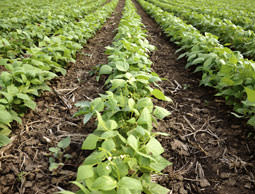
 Courtesy iStockphoto/Thinkstock A study shows more herbicides are lost through volatilization than through runoff. |
Runoff is a constant concern for farmers who use herbicides to control pests on their crops; however, when soil-moisture levels increase, there’s also a rise in herbicide losses through volatilization, meaning the chemicals evaporate. In fact, in one long-term field study, USDA scientists found that herbicide volatilization consistently resulted in herbicide losses that exceed losses from field runoff.
Soil scientist Timothy Gish and micrometeorologist John Prueger, with the USDA’s Agricultural Research Service, led the investigation that looked at the field dynamics of atrazine and metolachlor, two herbicides commonly used in corn production. Both herbicides are known to contaminate surface water and groundwater, which was primarily thought to occur through surface runoff.
Many experts once believed that volatilization was not a contributing factor to water contamination because atrazine and metolachlor had a low vapor pressure. However, the monitoring of both herbicide volatilization and surface runoff at the field-scale over multiple years had never been done.
So the team set up a 10-year study in an experimental field in Beltsville, Md., equipped with remote sensing gear and other instrumentation for monitoring local meteorology, air contaminants, soil properties, plant characteristics and groundwater quality. This allowed the team to carry out their studies on a well-characterized site where only the meteorology and the soil’s water content would vary.
Prueger and Gish observed that when air temperatures increased, soil-moisture levels had a tremendous impact on how readily atrazine and metolachlor volatilized into the air, a key factor that had not been included in previous models of herbicide volatilization. When soils were dry and air temperatures increased, herbicide volatilization did not increase, but it increased significantly when temperatures rose and soil was wet.
Most surprising was that throughout the study, herbicide volatilization losses were significantly larger than surface runoff. An average measurement of the two herbicides showed loss by volatilization to be about 25 times larger than loss from surface runoff.
Results from this study were published in the Journal of Environmental Quality.




